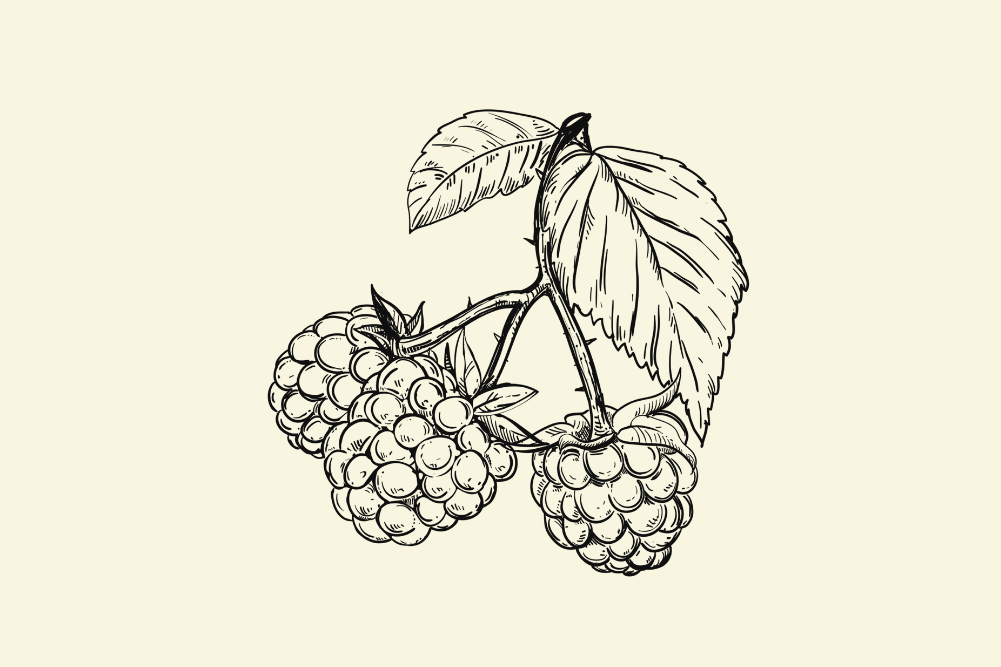The Revival of Ancestral Eating: A Path to Radiant Health
In today’s society, it seems like there’s a new diet trend popping up every other week. From veganism to low-carbohydrate, juice cleanses and intermittent fasting, people are constantly searching for the “perfect” way to eat in order to achieve their health and beauty goals. However, what many fail to realise is that these modern diets can often lead to adverse symptoms that they are trying to avoid in the first place: skin breakouts, weight fluctuations, stress and exhaustion. This is because many modern diets are restrictive in nature, leaving you depleted of essential nutrients and minerals that the body requires to feel, function and look your best. Instead of turning to these restrictive diets, perhaps the answer to optimal internal and external radiance can be found by looking back at what your ancestors ate and applying some of these simple practices to your way of eating.
Perhaps you are thinking that times have drastically changed and what your ancestors ate all those years ago isn’t relevant today. I hear you! When I say “ancestors,” I’m not referring to the Palaeolithic era of over 10,000 years ago. Instead, I’m referring to your more immediate ancestors: your grandparents and great-grandparents. What were their dietary habits? How did they prepare their food? Were there any cultural or traditional rituals around eating? While this may vary based on cultural background, social and economic factors and accessibility, it’s worth evaluating the fundamental aspects of your grandparents’ food choices.
Through my research and observations, I’ve come to understand that these not-so-distant ancestors’ dietary habits can provide valuable insights into how we can optimise our internal wellbeing and external radiance. The guidelines to achieve this are surprisingly simple and I have distilled them into three easy-to-follow principles.
- Enjoy wholefoods, minimally processed in their most natural form.
- Enjoy a wide variety of wholefood foods, including animal products, organ meats, seafood, vegetables, fruit, fermented foods, fats, beans,legumes and whole grains.
- Eat seasonally.
How the food system has changed over the last 100 years
Before I dive into how this way of eating can transform your vitality, digestion and the health of your skin, I want to explain what has happened to our food system over the last 100 years and why following these somewhat simple guidelines can be difficult for so many people.
Over the last 100 years, food processing and food quality have undergone significant changes. In the early 20th century, most people consumed food that was grown and produced locally. Food was minimally processed and most meals were made from scratch. However, with the rise of industrialisation and advancements in food technology, the food industry began to change dramatically.
One of the most significant changes in food processing has been the development of highly processed foods. These foods are often made from inexpensive ingredients, such as refined grains, sugars and unhealthy fats known as trans saturated fats and polyunsaturated fats. They are typically high in calories and low in nutrients, and often contain additives and preservatives to extend their shelf life. Sadly, the majority of packaged foods are processed and contain harmful ingredients; some examples include fast food, packaged snacks, sugary drinks and ready-to-eat meals.
Another change in food processing has been the widespread use of chemicals, including pesticides and fertilisers. These chemicals are used to increase crop yields and reduce pest damage, but they can also leave harmful residues on food. Additionally, many of these chemicals harm the environment and pollute water sources.
Food quality has also been affected by changes in the way food is grown and produced. In the early 20th century, most food was grown locally and consumed fresh. However, with the advent of industrialised agriculture, food is now often grown on large monoculture farms that rely heavily on chemical inputs.
This has led to a decline in soil health and a reduction in the diversity of crops grown. It has also led to a decrease in the nutritional quality of many foods. Studies have shown that many fruits and vegetables contain fewer vitamins and minerals than they did 50 years ago.
Another issue with modern food production is the use of antibiotics and hormones in livestock farming. These drugs are used to promote growth and prevent disease, but they can also lead to the development of antibiotic-resistant bacteria and hormone imbalances in consumers.
Overall, these changes in food processing and food quality have had significant impacts on our health and the environment. Highly processed foods are linked to a range of health problems, including acne, obesity, diabetes, heart disease, hormonal complications and an increased risk of developing cancer.
So you can see how eating in this somewhat simple way, that perhaps your grandparents did without much thought, has become more challenging in modern times. However, don’t be discouraged because it is entirely achievable.
Ancestral eating vs other diets
One of the primary features of modern diets is the restriction of certain food groups, and while they may claim to be the key to optimal health they often overlook the fact that our bodies require a diverse range of nutrients to function correctly. For instance, a low-carbohydrate diet may help with weight loss initially, but it can also lead to a deficiency in important vitamins and minerals found in fruits and grains. Similarly, a vegan diet may be followed for ethical reasons, but if not correctly planned it can lead to a lack of essential nutrients such as vitamin B12, iron and zinc.
Ancestral dietary habits, on the other hand, often included a diverse range of foods from different food groups. People understood the importance of including nutrient-dense foods in their diet, and they didn’t restrict entire food groups. The three principles include:
- Enjoy whole foods, minimally processed in their most natural form.
Wholefoods are foods that are minimally processed and contain no added ingredients or artificial substances. They are foods that are as close to their natural state as possible. Wholefoods are rich in minerals, nutrients, fibre and antioxidants. The way to increase your consumption of wholefoods is to minimise buying food that comes in packaging. Shop at your local butcher, purchase fruit and vegetables from the markets, do your best to prepare snacks at home and be mindful of the ingredients in the food you do have to buy in a packet. - Enjoy a variety of foods from each food group, including animal products, organ meats, seafood, vegetables, fruit, fermented foods, fats, beans, legumes and whole grains.
- Fruits and vegetables: These are wholefoods that are rich in vitamins, minerals and fibre.
- Whole grains: Whole grains can be non-processed or refined. Examples include whole wheat, rye, buckwheat, quinoa, brown rice and oats. Whole grains are rich in fibre, vitamins and minerals.
- Nuts and seeds: These are wholefoods that are rich in healthy fats, protein and fibre. Examples include almonds, cashews, chia seeds and flaxseeds.
- Legumes: These are plant-based wholefoods that are rich in protein, fibre and complex carbohydrates. Examples include chickpeas, lentils and black beans. Legumes can be used as a vegetarian protein source.
- Animal products: Wholefoods that come from animals, such as grass-fed beef, free-range chicken, wild-caught fish and organ meats provide you with a variety of minerals, vitamins and protein that cannot be obtained from vegetarian sources.
- Fermented foods: Fermentation is a process that involves the breakdown of carbohydrates by microorganisms such as bacteria or yeast. This process produces lactic acid, which acts as a natural preservative and gives fermented foods their tangy flavour. Examples of fermented foods include kimchi, sauerkraut, kefir, yogurt, kombucha and miso.
- Eat as seasonally as possible.
Eating seasonally means you are consuming fruits and vegetables that are currently in season in your region. Seasonal foods are at their freshest and most nutritious. Eating this way ensures you are exposed to a variety of vitamins over the year, rather than focusing on the same vegetables week to week. One of the best ways to do this is by shopping at your local market.
Ancestral eating for skin health
How can eating in a way more aligned to your ancestors improve your vitality and glow from the inside out?
Your skin is the largest organ in your body and a reflection of your overall health. To illustrate how ancestral eating can improve skin health I will use my grandmother’s diet as an example.
My grandmother ate sourdough bread that was minimally processed, rich in minerals and a source of fibre, which helps to regulate digestive processes and excrete waste. A sluggish digestive system causes waste build-up that can result in skin breakouts. Compare this to many modern breads found in supermarkets that are highly processed and contain added vegetable oils, shelf stabilisers and sugar, all of which are correlated with problematic skin.
My grandmother regularly enjoyed organ meats such as pâté and lambs’ brains, something that would make most people squirm these days. She had a balanced diet and enjoyed a variety of animal and vegetarian proteins in soups and stews. Animal products such as meat, fish and dairy are rich in protein, omega-3 fatty acids and zinc, which are essential for maintaining healthy skin. Organ meats are nature’s multivitamin, containing a wide range of minerals, collagen and key skin-loving vitamins, including vitamin A.
My grandmother ate real butter, cream and fresh milk. Butter is an excellent source of fat-soluble vitamins A, D, E and K. These vitamins are essential for healthy skin, as they play a key role in maintaining skin elasticity, reducing inflammation and promoting wound healing. Butter also contains antioxidants such as beta-carotene and selenium, which can help protect the skin from damage caused by free radicals. Free radicals are unstable molecules that contribute to ageing and can damage cells, including skin cells. The fats in butter can help strengthen the skin barrier, which is the outermost layer of the skin that helps to protect against environmental stressors such as pollution and UV radiation. When the skin barrier is healthy, the skin is better able to retain moisture and protect against damage. When choosing dairy products it is important to look for organic and grass-fed to ensure they are of high quality.
Lastly, my grandmother made her breakfast, lunch and dinner at home. Each of these meals contained as a component either seasonal fruits or vegetables, which contain an array of skin-loving vitamins. For example, vitamin C found in citrus fruits helps in collagen production, which is important for skin elasticity and firmness.
Your grandmother’s diet may have been entirely different from mine. Perhaps she consumed more fermented foods, broths or noodles that were specific to her cultural heritage. Regardless of your background, you can refer to the three simple guidelines to improve the nutritional and medicinal aspects of your diet for optimal skin health.
Ancestral eating for an optimised gut health
We cannot talk about vital health without talking about the digestive system. The digestive system is responsible for breaking down food into nutrients that the body can use for energy, growth and repair.
Sadly, the changes to the food system are wreaking havoc on people’s digestive systems and overall health.
Eating in a way that was similar to your ancestors can significantly support your digestive health and ultimately your inner and outer radiance — here’s why:
- Anti-inflammatory: Whole foods are naturally anti-inflammatory. Inflammation damages the cells lining the digestive tract and is one of the key players in many diseases.
- Rich in fibre: A wholefood, minimally processed, seasonal diet is naturally high in fibre. Fibre helps to keep the digestive system running smoothly by promoting regular bowel movements and ensuring waste is excreted from the body. Fibre also helps to feed beneficial bacteria in the gut and helps to reduce the risk of colon cancer and other digestive disorders.
- Supports gut microbiome: Pre- and probiotic-rich foods support the health of the trillions of bacteria in the gut known as the microbiome. A balanced gut microbiome is key for a strong immune system, balanced moods, optimised energy, bright skin and better nutrient absorption.
- Reduces exposure to harmful chemicals: A wholefood, minimally processed, seasonal diet is less likely to contain harmful chemicals such as pesticides, preservatives and artificial flavours. These chemicals can disrupt the balance of bacteria in the gut, leading to digestive discomfort and other health problems.
Adopting an ancestral way of eating could be the simplest and most nourishing way to improve your overall health and appearance. By looking back at what your grandparents and great-grandparents ate, you can gain valuable insights. Ancestral eating is not a one-size-fits-all approach as dietary habits may vary based on cultural, social and economic factors. However, by following the three simple guidelines and incorporating foods specific to your cultural heritage, you can ensure you’re receiving all the essential nutrients required to function, feel and look your best. Ancestral eating provides a holistic approach to health that emphasises the importance of nutrient-dense whole foods and traditional food preparation methods.








